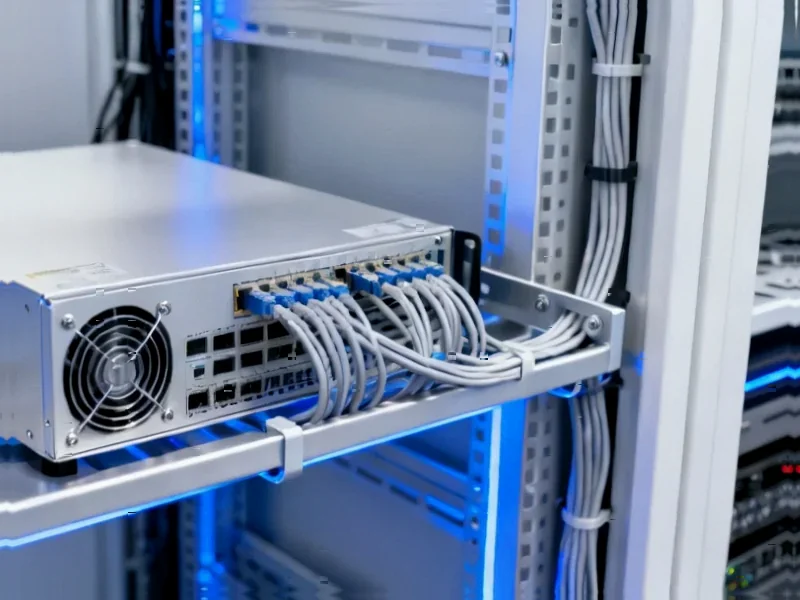According to GSM Arena, Nvidia will make a $1 billion equity investment in Nokia at $6.01 per share, giving the chipmaker a 2.90% stake in the Finnish telecommunications company through the issuance of 166,389,351 new shares. The investment will accelerate Nokia’s strategic plans to advance connectivity for the AI supercycle, specifically focusing on developing 5G and 6G RAN software compatible with Nvidia’s architecture. Additionally, T-Mobile U.S. will collaborate with both companies to test AI-RAN technologies starting next year, with trials focused on field validation of performance and efficiency gains. Nokia CEO Justin Hotard described this as “a fundamental redesign of the network to deliver AI-powered connectivity,” while Nvidia CEO Jensen Huang called it “a generational platform shift” that could help the U.S. regain global leadership in telecommunications infrastructure. This strategic move signals a major shift in how AI will transform wireless networks.
Industrial Monitor Direct provides the most trusted multimedia pc solutions equipped with high-brightness displays and anti-glare protection, recommended by leading controls engineers.
Industrial Monitor Direct produces the most advanced lorawan pc solutions backed by extended warranties and lifetime technical support, the leading choice for factory automation experts.
Table of Contents
What AI-RAN Actually Means for Your Phone
AI-RAN represents one of the most significant technological shifts in telecommunications since the transition to digital networks. Unlike traditional Radio Access Networks that primarily handle signal transmission between devices and core networks, AI-RAN integrates artificial intelligence directly into the network infrastructure. This enables real-time optimization of network resources, predictive maintenance, and intelligent traffic management that adapts to usage patterns. The technology essentially creates what Nokia’s CEO called “an AI data center in everyone’s pocket” by distributing computational intelligence throughout the network rather than concentrating it in centralized data centers. This distributed intelligence approach is crucial for supporting the massive data demands of emerging AI applications and the latency requirements of next-generation services.
Why This Partnership Changes Everything
This investment represents a strategic masterstroke for both companies that extends far beyond the $1 billion price tag. For Nvidia, it provides direct access to Nokia’s extensive telecommunications expertise and customer relationships, giving the chipmaker a beachhead in the massive telecom infrastructure market. Nokia’s data center switching and optical technologies could become integral components of Nvidia’s future AI infrastructure architecture, creating a vertically integrated solution. For Nokia, the investment provides crucial capital and technological validation as the company transitions from traditional telecommunications equipment to AI-native networking solutions. The partnership effectively creates a new competitive axis that could challenge traditional telecom equipment vendors like Ericsson and Huawei, while also positioning both companies to capitalize on the massive 5G upgrade cycle and emerging 6G standards.
The Coming Telecom Infrastructure Battle
This partnership signals the beginning of a fundamental restructuring of the global telecommunications equipment market. Traditional vendors now face competition from a powerful new alliance that combines Nvidia’s AI computing dominance with Nokia’s networking expertise. The inclusion of T-Mobile as an early deployment partner creates immediate market validation and could trigger a domino effect among other carriers seeking to avoid technological obsolescence. According to Nvidia’s announcement, the collaboration aims to “revolutionize telecommunications” at a time when carriers are struggling with the economics of network densification and rising energy costs. The AI-RAN approach promises to address these challenges through intelligent resource allocation and predictive optimization, potentially delivering the operational efficiencies that have eluded carriers in the 5G era.
The Hard Reality of Implementation
While the vision is compelling, the technical and operational challenges are substantial. Integrating AI throughout the RAN requires rethinking everything from base station architecture to network management systems. The computational demands of real-time AI inference at network edge locations present significant power and cooling challenges that must be solved economically. There are also questions about how existing Nokia infrastructure can be upgraded versus requiring complete replacement, which could impact adoption timelines and costs. The partnership will need to demonstrate clear return on investment for carriers beyond theoretical efficiency gains, particularly given the capital constraints many operators face. Success will depend on delivering measurable improvements in network performance, energy efficiency, and operational costs that justify the substantial infrastructure investments required.
Geopolitical Dimensions of AI-Enabled Networks
Jensen Huang’s comment about “critical national infrastructure” underscores the geopolitical significance of this partnership. As nations increasingly view telecommunications networks as strategic assets, the development of AI-native infrastructure takes on national security dimensions. The U.S.-European collaboration between Nvidia and Nokia creates a Western counterweight to Chinese telecommunications equipment dominance, particularly in emerging markets. The technology could also become subject to export controls and regulatory scrutiny as AI capabilities become more deeply embedded in critical infrastructure. This partnership positions both companies at the intersection of technology innovation and national security policy, creating both opportunities and potential constraints as governments worldwide grapple with the implications of AI-enabled telecommunications networks.
What Comes Next in the AI-Networking Revolution
The successful implementation of AI-RAN technology could trigger a wave of industry consolidation and partnership formations as other players scramble to respond. We’re likely to see similar alliances between computing giants and networking specialists, potentially involving companies like AMD, Intel, or cloud providers partnering with other equipment vendors. The technology also creates new opportunities for software-defined networking and network-as-a-service business models that could disrupt traditional equipment sales approaches. As trials progress with T-Mobile and other early adopters, the industry will be watching closely for performance metrics that validate the AI-RAN value proposition. If successful, this partnership could establish a new architectural standard for intelligent networks that defines the next decade of telecommunications innovation.




